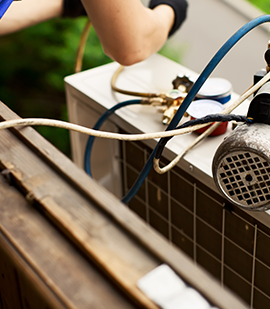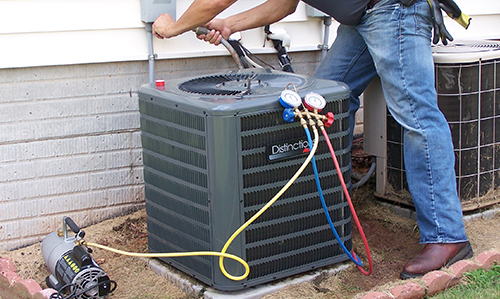

Between work and home most people are indoors 90% of the time, test have shown that the quality of indoor air in most cases is more polluted then some of the largest sites and busiest industrial areas and this indoor air pollution has a major impact on a person’s overall health and well being. Indoor air quality is not to be taking lightly because it can poison you and your family if it goes undetected.
So if you are in the market to buy a new home or just trying to maintain the one you have now, proper HVAC ventilation is critical to creating a healthy indoor environment within your home. HVAC ventilation is essential to control the indoor environment for the comfort of the occupants and to ensure the safe operation of your HVAC system, and to properly control the relative humidity to prevent having a damp basement and creating a breeding ground for mold and fungus to grow.
Vent for Your Health
A hvac system with proper hvac ventilation ensure proper indoor air quality and will protect it occupants from foul odors, irritating chemicals, cleaning products, carbon monoxide and radon which are dangerous gases. Having a properly operating hvac ventilation system in place means you will be able to maintain proper humidity within the structure and eliminate the spread and growth of mold and mildew, which would normally cause the occupants with allergies or respiratory problems or asthma.
Vent for Your Home
Another task of HVAC ventilation system is to protect the structure from damage due to high humidity levels in the air. A high level of humidity will rot window frames, soffits and eaves, create high bacteria levels, and invites termites carpenter ant insect infestations. Damp insulation in walls and ceilings invites more heat loss, creating higher gas and electric consumption increasing utility bills, and mold with the walls and ceilings. Items like your hardwood flooring, draperies, electronics, and wood furniture can be damaged with uncontrolled excess humidity
Ventilation … means the provision of fresh air to a room
Typical ventilation systems supply fresh air to the structure and removes stale air by diluting it with fresh air in. There are several ways this can occur naturally. As an example, the common opening of windows and doors to allow air to get out of the structure and at the same time allow new fresh air to enter the structure and mix with the indoor air. Another example of home’s ventilation is its chimney, designed to evacuate carbon monoxide gases from the furnace, hot water heater, which exhaust warm, moist exhaust gases.
So here are some ways to tell if you already have a ventilation issues. Have you noticed the smells from kitchen garbage cans; a musty smell coming from the bedroom closets; or mold or mildew along the walls, or ceilings? Do you have condensation on your windows interior glass panes? These may be signs of poor proper ventilation and should be addressed.
Fixing your home’s ventilation
Simply opening a window is an easy, low-cost way to oxygen rich fresh air, however with a fan you can direct the air where you want it to go. Proper hvac ventilation can be attained typically at a nominal cost. Based on your home’s age, layout and location and the manufacture of equipment you installed, a hvac ventilation system could cost in the range of $1,000 to $2,500, depending on the installation. The amount of energy required to run an efficient ventilation system will cost $200 to $300 per year based on energy rates at that time, the home’s location, the type of ventilation system used, and the type construction used on your home. Operating costs for new construction can be minimal by building a sound, insulated, sealed home with a ventilation system designed to fit the home. Applying the same technology in existing structures can greatly reduce energy costs used in operation because the majority of structures are leakier than they should be. Some ventilation systems include energy-recovery features. While more expensive to install, in time they can pay for themselves in energy savings.
Evaluating your home
Here are some questions to help you evaluate your home’s ventilation system. If you answer “no” to any of these questions, you may want to consider making some changes to your HVAC ventilation system.